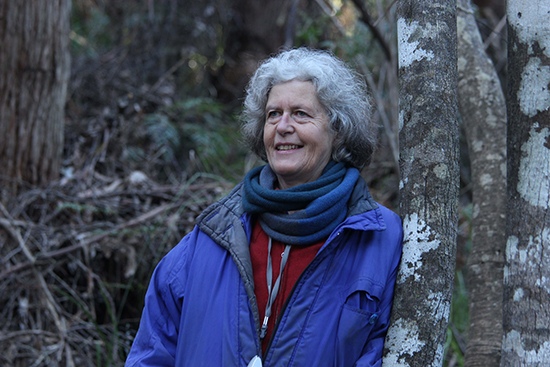
A Tasmanian Protector of Nature, Sarah Lloyd
Thirty years ago Sarah Lloyd decided to move out of the city. She and her partner chose to settle in a remote eucalypt cloud forest on a small mountain near Birralee in northern Tasmania, Australia. In the following interview, Sarah recounts the time when she camped in the forest in an open shelter for 18 months. During that time, they built their home by hand from local stone. They had a few challenges, but mostly it was a great adventure.
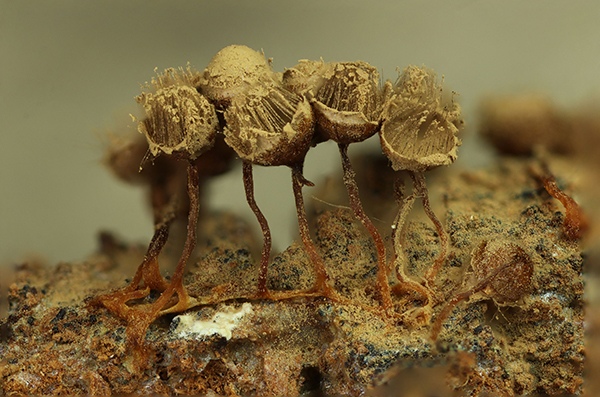
Central to the adventure was learning about the natural environment around her. From bird counts to fungimap, Sarah joined volunteer groups and provided vital information about birds and fungi in order to learn about their habitats. Over the years, Sarah has added 80 slime moulds (myxomycetes) to the list of species known to occur in Tasmanian, and discovered four species new to science. In recognition of her effort and dedication, Sarah received a medal from the Australian government; a new species of slime mould, Alwisia lloydiae, was named in her honour.
We are honored to be able to interview Sarah and learn how her passion for wildlife has propelled her to become a hero by recording the amazing life deep inside the forest.
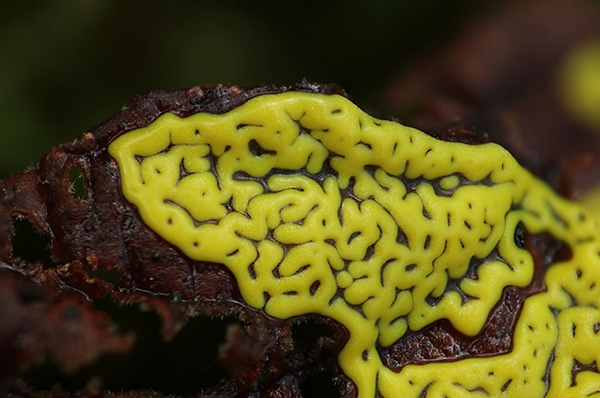
Q: We are very intrigued by your personal story. You moved to “a wet eucalypt forest at Black Sugarloaf” in Tasmania in 1988. Please tell us why you picked this place for relocation and the experiences you had during your early settlement.
A: I moved to Black Sugarloaf with my partner, Ron Nagorcka, because we wanted to move out of the city. The forestry industry was accelerating in Tasmania and there was a proposal to build an industrial-scale, polluting pulp mill in the north of the island. We wanted to live a simpler life, so we started looking for something affordable, within a reasonable distance to the local towns where our children attended school, and with a dwelling. However, circumstances changed and after looking at various parcels of land with no dwelling, we recognised the special qualities of 50 hectares of forested land at Black Sugarloaf despite it just having been selectively logged. It was strewn with logging debris when we bought the land so our first task was to clear a small area for a shelter, and eventually a house. Ron, a musician and composer, is also a builder who was keen to experiment with locally sourced — and cheap — building materials and techniques not necessarily approved of in the local municipality’s building regulations. The house and various other buildings are constructed of the local stone, small logs we salvaged from the logging debris, and second-hand windows, doors, and roofing materials.
The main drawback was — and continues to be — access to the land, which now has various buildings, including our house. This rough rocky unmade road is about 2.5 kilometres from the sealed road and much of it was impassable when we first bought the land. It required several loads of gravel before we could use it and it was (and still is) unsuitable for standard vehicles. We initially carried materials to the site to make a shelter, and it was in a ‘teepee’ made of calico where we spent the first 18 months. This was not completely weather-proof, but Ron had built us both a studio to which we could retreat if the weather was unfavorable for house building or gardening.
It took about 18 months before the house was complete, and we reminisce fondly about living without a permanent roof over our heads. Living semi-outside was an excellent way to observe and learn about the local plants and animals, especially the birds.
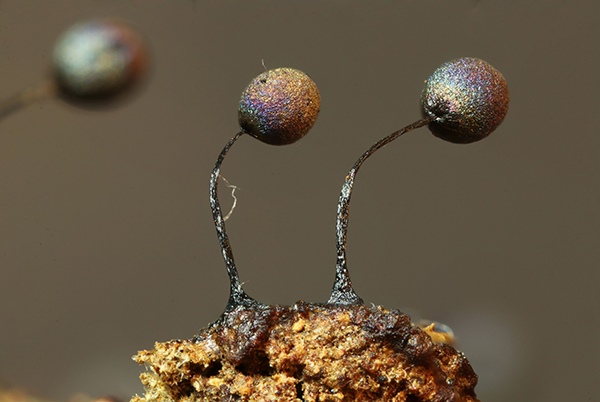
Q: Please tell us about the vegetation in Black Sugarloaf. What type of plants thrive there?
A: The vegetation at Black sugarloaf varies depending on aspect, drainage, and past land use. It is classified as wet eucalypt forest and in some areas 40-metre-high eucalypts dominate the canopy. The mid-storey and understorey vegetation are rich and varied and the wetter gullies are dominated by tree ferns and other ferns. Much of the land supports threatened plant communities that we have protected in perpetuity with a conservation covenant.
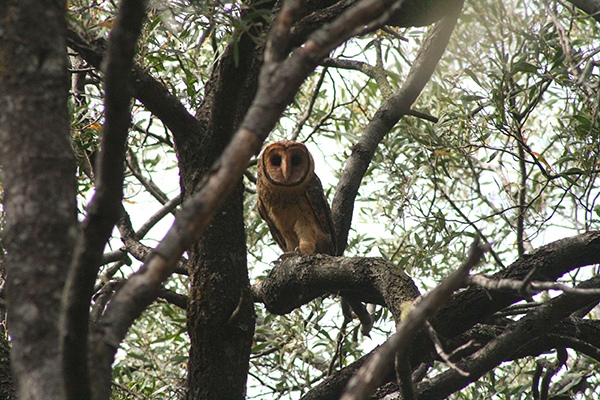
Q: Once you got settled, you volunteered at the Australian Bird Count, a nationwide project. Please tell us why you joined this project and how you were involved.
A: The Australian Bird Count was a nationwide project conducted by the Royal Australasian Ornithologists Union (now Birdlife Australia) where volunteer bird watchers were asked to count the birds in a particular area.
Birds have always captured my imagination and since I could first say the word I wanted to be an ornithologist. The Australian Bird Count was a chance for me to hone my skills and Black Sugarloaf was the perfect place to do it. My study site was home and, as per instructions, I established three search areas. Each search area was surveyed for twenty minutes every fortnight and I continued this for five years. It was a marvelous way to learn about the habits, calls, and habitat and foraging requirements of the different forest birds and it was fortuitous that it coincided with the inauguration of the local field naturalist group. The comings and goings of the birds, especially the nomadic honeyeaters, often correlated with the flowering times of the local plants, and the botanical expertise of my field naturalist colleagues was invaluable in assisting me to identify the plants around home.
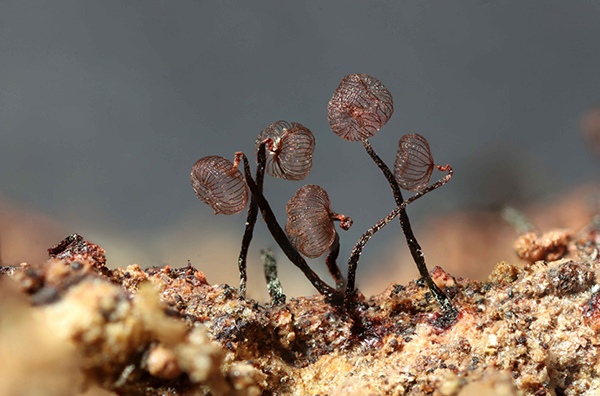
Q: Later you joined Fungimap, another volunteer project. Please tell us about this project.
A: I started contributing to the Fungimap project, a scheme that was initiated in 1995 to address a lack of data about Australian fungal species using the information sent in by a network of professional and amateur mycologists and naturalist recorders throughout the country. Initially, the project aimed to map the distribution of more than 100 “target” species, i.e species that could easily be identified from photographs in field guides. Eventually, information about all named fungi and myxomycetes (slime moulds) was requested.
Q: When did you start noticing myxomycetes near where you live and what have you accomplished in finding them?
A: I was introduced to myxomycetes (acellular slime moulds) during the Fungimap project but I didn’t start seriously looking for slime moulds in the forest surrounding our home until 2010. I had no idea when I started my study that they would be so common and numerous. I have found over 120 species within about one kilometre of our house; there were only 42 species known to occur in Tasmania before my study began. I have also found four species that are new to science. The first, Alwisia lloydiae was named in my honour; three Tubifera species were described and named in 2019 and there are several additional new taxa that are in the process of being described.
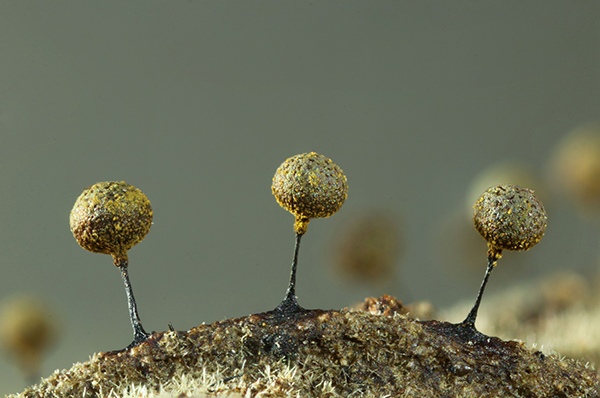
Q: Please introduce us to some of your native myxomycetes and their characteristics.
A: Some of the species that are common at my study site include the beautifully iridescent Lamproderma gracile, Lamproderma echinulatum and Elaeomyxa cerifera. One of the litter-dwelling species, Elaeomyxa reticulospora, was only known from the type locality in Java before I found it in Tasmania. It was initially considered to be “very rare”. However, it is the most common species I find.
Q: Being a naturalist, your contribution has been enormous for the past two decades. Please tell us what worries you the most in the current environment.
A: Climate change is a huge issue and we are witnessing its effects with less predictable weather, and massive wildfires and floods across the country. Despite this, the current Australian government is not facing this problem. The continued destruction of Tasmania’s (and the planet’s) natural environment, and the loss of species as a result of our activities is especially heartbreaking. I have spent almost all my life in Tasmania and it’s very distressing to see the continuing destruction.
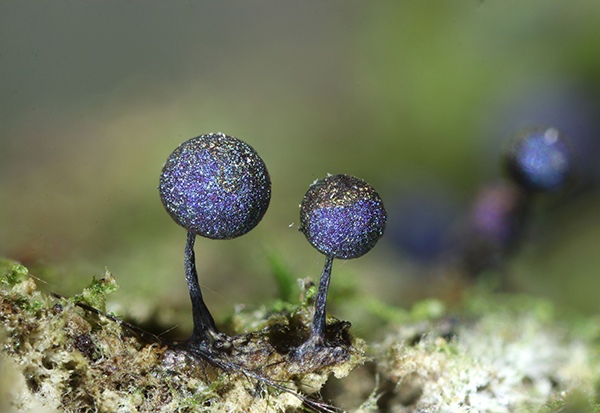
Q: If you don’t mind, please tell us about the current projects you are involved in.
A: I am currently working on several projects. I am putting together a display to coincide with National Threatened Species Day, which commemorates the death of the last Thylacine (Tasmanian tiger) in captivity on 7 September 1936. This was a shameful episode in Tasmania’s history, but the current clearing and destruction of habitats in Tasmania indicate we have not learned from our mistakes.
The theme of the day is “Beneath the surface: fungi, slime moulds, and the wood wide web”. The display will include many panels with photos and information describing the ecological roles of different groups of organisms including fungi, slime moulds, plants, mammals, reptiles, frogs, threatened species, threatening processes, soils, wasps, spiders, ants and bees, beetles, mosses, and lichens etc.
I, along with various neighbours, am also working on preventing the Tasmanian government from building a high-security prison on a nearby conservation reserve.
Sarah’s Instagram
We deeply appreciate Sarah making time for us in her busy schedule. We hope her ongoing protection of the Tasmanian wildlife focuses people’s attention to the crisis there and motivates others to protect the endangered species on our planet earth.